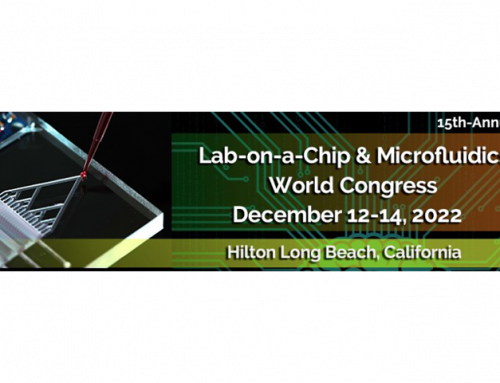At this very moment, somewhere in the developing world, a healthcare professional uses a portable, handheld diagnostic tool to screen the denizens of a remote, rural town for an infectious disease—without the need for expensive or inaccessible laboratory equipment.
With this diagnostic device, the professional can provide rapid and accurate diagnostic results in real-time at the point of care, enabling them to provide better care to their patients and improve patient outcomes. With the rapid results from their lab-on-chip device, they can monitor disease outbreaks and health trends in real-time and provide valuable, accurate data on the spread of disease to public health organizations.
Meanwhile, in a major city in the United States, a healthcare professional uses a lab-on-chip device to determine a patient’s susceptibility to diabetes and uses the results to tailor their treatment plan. In a major pharmaceutical laboratory, researchers use similar devices to increase their throughput for drug development or study cell cultures in a controlled environment.
Elsewhere, a woman takes a pregnancy test and discovers that she is going to be a mother, and a man takes a COVID test ahead of visiting his family for the holiday and, much to his relief, tests negative.
It feels almost like magic—being able to diagnose a disease with a simple handheld device rather than a suite of expensive, complex, immobile scientific tools. But the heart of these portable devices—the “chip” in a lab-on-chip device—is an extraordinarily complex piece of engineering: the microfluidic chip.
What is a microfluidic chip?
Any small amount of a liquid—from water to saliva, sweat, blood, and other bodily fluids—packs within itself a vast amount of information, and by taking as little as a few microliters or picoliters of that fluid, a microfluidic chip can collect data for chemical analysis, biological assays, drug discovery, medical diagnostics, and beyond.
Put simply, microfluidics is the physics of controlling and manipulating extremely tiny volumes of fluids. A microfluidic chip utilizes these principles of fluid flow on a micro-scale. On the chip, you’ll find an extremely tiny system of channels and chambers that guides small samples of liquids through advanced diagnostic processes to deliver real-time results.
How do microfluidic chips work?
Microfluidic chips rely on extremely precise, nano-scale engineering to function. A microfluidic chip consists of microchannels molded or engraved onto a thin wafer of substrate made of glass, silicon, or polymer materials. These microchannels are so thin that they are on the same order of magnitude as a human hair! In order to function properly, the chip requires a cover layer firmly bonded to the substrate to prevent leaks or loss of pressure—the only places fluid should be entering or exiting the chip should be specific inlet/outlet ports.
Valves, pumps, or other control mechanisms distribute tiny amounts of fluid through the substrate’s channels and chambers.
What is the purpose of a microfluidic chip?
Lab-on-chip devices and other instruments that use microfluidic chips depend on their chips to gather important data from very small amounts of fluid. The precise and complex arrangement of the microchannels and chambers molded or engraved onto a microfluidic chip allows it to perform specific functions, such as mixing, separating liquids, or detecting or reacting to the presence of certain compounds within the liquids.
The behavior of the fluid as it passes through the microfluidic chip’s intricate structure and undergoes these functions provides useful data to the microfluidic device’s user.
How are microfluidic chips used?
Microfluidic chips play vital roles as well in tissue engineering, drug delivery, chemical synthesis, gene sequencing, and more. Microfluidic chips see use in a wide range of fields beyond point-of-care medicine and pharmaceuticals as well, including molecular diagnostics, agricultural research, and veterinary diagnostics.
Examples of Microfluidic Devices
Microfluidic chips come in all shapes and sizes, as long as those sizes are “small.” Microfluidic devices can vary wildly in complexity, and in the countless variations of their design come countless applications in countless fields and industries.
Some examples of microfluidic devices and their use cases include:
- Droplet microfluidic devices that process tiny droplets of fluids for drug screening, single-cell analysis, and high-throughput cellular and genome sequencing
- Lab-on-chip devices that incorporate various advanced laboratory functions used for medical diagnostics, environmental monitoring, food safety testing, and other use cases
- Microreactors, which mix reactants in small volumes to perform chemical synthesis quickly and efficiently
- Organ-on-chip devices used for disease studies, drug discovery, and personalized medicine
Microfluidic technology incorporates microfabricated biosensors, pumps, and valves to achieve their processes.
Lab-On-Chip Technology
Microfluidics are the heart of lab-on-chip devices—small, portable medical tools that perform high-throughput laboratory functions for point-of-care testing, drug development, disease diagnosis, cellular analysis, and personalized medicine. From anti-viral PCR tests to pregnancy tests to blood glucose and cholesterol testing, these are some of the most common uses of microfluidic chips, though it’s far from their only use case.
Organ-On-Chip Technology
One other example of microfluidics chip applications includes organ-on-chip technology. Lab-on-chip technology takes complex laboratory functions which usually require large, expensive, immobile technology, and compresses them into a single chip in a portable, handheld device. Likewise, organ-on-chip technology uses a microfluidic device to replicate the function of a human organ.
Organ-on-chip technology incorporates cells to mimic the function of the organ it replicates so researchers can simulate the organ’s physiological functions, making organ-on-chip technology especially useful for testing drugs, studying disease processes, and developing new treatments.
What industries use microfluidic devices?
While all this talk of lab-on-chip and organ-on-chip technology has an obvious healthcare, biomedical, and pharmaceutical bent, these industries are not the only ones that rely heavily on microfluidic chips.
Microfluidics also find use in environmental monitoring as biosensors to detect pollutants in toxins in water, air, and soil. Microfluidic biosensors can also detect pathogens and contaminants in food and agricultural products, keeping our food safe for consumption. Microfluidic reactors find use in the chemical and energy industries to synthesize chemicals and produce biofuels and renewable energy products.
In the defense industry, microfluidic chips provide detection capabilities for chemical and biological agents, and the pharmaceutical, biotechnology, and semiconductor manufacturing industries use them for process monitoring and quality control. In addition, researchers across many fields, including chemistry, physics, and biology, depend on microfluidic devices for their academic research.
Designing and Manufacturing Microfluidic Chips
Microfluidic technology is extremely versatile, with a multitude of applications from medicine and biotechnology to chemistry, agriculture, life science, industrial manufacturing, research, and more. As small as microfluidic chips are—with lengths and widths of as little as a single centimeter—the standards and tolerances for manufacturing are hair-thin—literally.
Manufacturing the right microfluidic device for your industry’s unique needs requires extremely precise, accurate processes and deep engineering expertise. The right channel layout, the right substrate and cover layer materials, and the right sealing and bonding methodologies and techniques—all are of supreme importance to designing a microfluidic chip that functions properly and delivers accurate, real-time results.
Vantiva Precision BioDevices is a microfluidics manufacturer focused on delivering proven manufacturing processes and logistics expertise to produce precision micro- and nano-scale microfluidic chips to bring your products from design to prototype to production. As a strategic manufacturing and development partner, we reduce risk and help out partners realize their microfluidic products at any scale.
To find out what we can do for you, reach out to our experts today:



